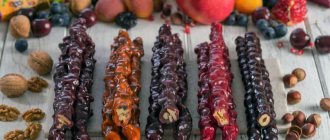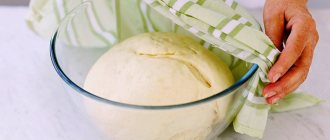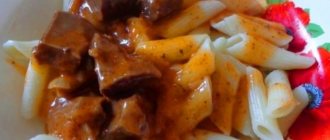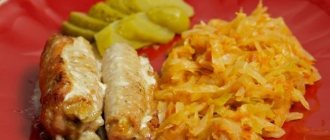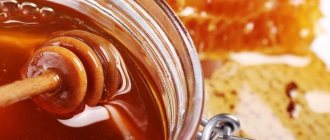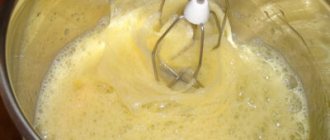“How can you govern a country that has 246 varieties of cheese?” Charles de Gaulle once said these words about France. But since then, the number of varieties of this product both in France itself and in the world in general has increased significantly. The number of blue cheeses has also increased.
Blue cheese is not for everyone. And it’s not just the high cost of this delicacy. Not everyone will like its sharp, piquant taste. You have to be a true connoisseur to taste the subtle notes in blue cheeses that gourmets admire so much. For many, blue cheese is associated exclusively with Roquefort and France. But in fact, Roquefort is just one representative of a large family of blue cheeses (albeit the most famous). In addition, not all delicacies from this group have French roots.
What is blue cheese
Content:
- What is blue cheese
- How blue cheese is made
- Varieties of blue cheeses
- How to choose correctly
- How to store it correctly
- How to Serve and Use
- How to make blue cheese at home
- Beneficial features
- Possible hazardous properties
Blue cheese is a general name for sharply salted varieties of the product that contain a special type of Penicillium mold (a “relative” of the well-known antibiotic penicillin). Most often, the blue veins in such a product are Penicillium Roqueforti or Penicillium Glaucum. Interestingly, these mushrooms were not bred specifically for cheese, as is the case with Camembert, but were accidentally found in nature. Typically these fungi live in damp, cold caves. This is why the best blue cheeses are aged in natural “refrigerators”. Although today, in most cases of industrial production, bacteria are artificially introduced into the head of cheese.
These fungi form blue or blue-green veins of mold in the product, and bacteria such as Brevibacterium give it a specific odor. Depending on the type of product, fungal spores may be added at different stages of production (before or after curdling). But for mold to grow, it needs oxygen. Therefore, fungal spores are often injected into cheese with special needles along with oxygen, thus creating a characteristic pattern and texture of the product.
Nobody knows when the first blue cheese was made. But many have heard the beautiful legend about the shepherd and the beauty. One day, a young man herding sheep in the Roquefort mountains saw a beautiful girl from afar. The guy left his lunch in the cave, which consisted of bread and sheep's cheese, and rushed off in search of a beautiful stranger. But after many days of unsuccessful searches, the young shepherd returned to the cave, where a forgotten lunch awaited him. But instead of fresh cheese, he saw a slice covered with mold. However, the guy was so hungry that, despite the mold, he ate the cheese. To his surprise, the spoiled product turned out to be very good. They say this was the world's first Roquefort.
Description and production method
The basis for the production of Dorblue, like other blue cheeses, is cow's milk. Its recipe is shrouded in mystery, but it is still known that it is produced in the same way as most other analogues: noble mold is grown in closed cellars with certain temperatures and sufficient humidity. According to some sources, the blue mold culture used in production is penicillium roqueforti. It takes about five months to prepare.
Mass production of cheese is carried out in the small town of Lauben, located in Bavaria. The product has three varieties:
- Dorblu Classic;
- Dorblu Royal Blue;
- Dorblu Grand Noir.
The most elite and exclusive variety is Dorblu Grand Noir.
Dorblu is often classified as a semi-hard cheese. It has an exquisite spicy aroma and a delicate salty taste with a piquant hot and spicy note. Its surface does not become crusty, but it also contains mold. It is usually white, less often yellowish-cream in color. The interior of the dorblu is soft and tender, with bluish-green streaks of mold that form a marbled pattern and sometimes extend to the surface of the cheese.
How blue cheese is made
Almost all varieties of blue cheese (except Roquefort) are made from cow's milk with the addition of blue mold. But this does not mean that all blue cheeses are the same. Today there are many varieties of this delicacy. They differ from each other:
- by consistency;
- according to the stamps of the fungi used;
- by holding time;
- according to the degree of salinity.
By the way, the taste of the product depends significantly on the type of milk used. Cheeses made from cow, goat and sheep are noticeably different. Moreover, even products made exclusively from cow's milk, obtained from animals from different regions, will also have different tastes.
The intricate pattern of mold threads is often done intentionally. To do this, the cheese heads are pierced with special spiked needles, creating miniature tunnels in the product through which air circulates, which promotes mold growth. Such manipulations also help soften the texture of the product.
Roquefort cheese is made exclusively from the bacterium Penicillium Roqueforti, first found in the caves of the French city of Roquefort. In the old days, cheese makers left rye bread in these caves and returned for it no earlier than a month later. Dried bread covered with mold was crushed and added to the cheese mass. But it must be said right away that Penicillium Roqueforti is not at all the mold that covers old bread at home.
The traditional process of creating blue cheeses consists of 6 stages. The first stage is the so-called acidification, during which the lactose contained in milk is converted into lactic acid. The second step involves adding rennet to the milk product, which causes curdling. Then the cheese heads are formed and “preserved” in salt. After giving the product the required shape and removing excess liquid from it, the cheese is transferred to a damp, cool room, where it ages and acquires its characteristic taste and aroma.
Types of blue cheeses
There are many types of blue cheeses, they all differ in the degree of ripening, production method and composition. The most famous varieties are:
- Bergader (Upper Bavaria) , has a semi-solid consistency, has a sharp, salty taste with creamy-sweet notes, goes well with fortified red wines, can be served with sauces, vegetables;
- Blue de Langruty (Switzerland) , has a semi-solid consistency, a sharp, creamy taste, an exquisite spicy aroma, acts as an independent snack, combined with honey and jams;
- Gorgonzola (Italy) , crumbly and soft cheese with spicy notes, combined with fruits, vegetables, nuts, added to soufflés and sauces;
- Dor blue (Germany) , has a medium consistency, has beautiful blue veins, often called “blue gold” for its unique taste;
- Roquefort (France) , has a pleasant, pungent taste and snow-white color with streaks of blue mold.
Other types of blue cheeses are also known; in addition to the manufacturing technology, they differ in consistency, aroma and taste, which only true gourmets can appreciate.
Varieties of blue cheeses
The blue cheese family consists of many representatives. These are Roquefort, Gorgonzola, Danablu, Stilton, Fourme d'Ambert, Dorblu, Bavarian, Parsifal, Saint-Agur, Bergader, Böle, Bleu de Cos, Valmont, Cambozola, Quibillet, Montagnolo, Osterkron, Trautenfelzer and many others. And a true gourmet will never confuse them, since he knows to the smallest detail how they differ.
Roquefort
This product comes from France and is the most famous blue cheese today. It is made from sheep's milk. At the same time, not all sheep’s milk can become Roquefort, but only those grazing in certain regions of the country. In addition, real Roquefort is aged only in the caves of Roquefort-sur-Soulzon, since only there the Penicillium roqueforti bacteria necessary for the creation of cheese live. This cheese matures from 3 to 10 months in caves, where stable temperatures and high humidity are maintained throughout the year. To speed up the growth of blue mold, rye bread is traditionally used (leaving slices of bread in the cave).
Danablu
Danablu is a Danish blue cheese. It was created by Danish cheese maker Marius Boel at the beginning of the twentieth century. This product was intended to be similar to Roquefort in terms of appearance, texture and taste. Only they make it not from sheep’s milk, but from cow’s milk. The Danish product is a semi-soft blue cheese with a pronounced aroma characteristic of Roquefort. Traditionally, the cheese is aged in a cave or dark and humid environment for 8-12 weeks.
Gorgonzola
It is a blue cheese of Italian origin, made from whole cow's or goat's milk (sometimes a mixture of the two). The texture of Gorgonzola ranges from soft to crumbly. It is said that this variety of cheese dates back to the Middle Ages, although some suggest that Gorgonzola from the 11th century was not yet decorated with blue “veins.” The name of the cheese comes from a small town near Milan. Today this product is made in Piedmont and Lombardy. It usually takes 3-4 months to mature (the longer Gorgonzola is aged, the harder the consistency of the cheese will be).
Maytag
This type of cheese is the American counterpart of Roquefort. The product got its name from a dairy farm located in Iowa near Newton. The first maytag appeared in 1941. The grandchildren of the founder of the Maytag corporation dreamed of making a cheese that could compare with Roquefort. Today, this product is made using a similar technology as Roquefort from fresh milk from our own farm in Iowa.
Stilton
It is the British version of a gourmet blue cheese. But true stilton can only be made in Leicestershire, Nottinghamshire or Derbyshire. It is easily distinguished from other blue cheeses by its cylindrical shape, rather loose texture, dark rough rind and blue “veins” running from the center to the edges. Stilton ripening time is about 9 weeks.
Cabral
This variety of blue cheese is made only in northern Spain. And all because for real cabral they use only the milk of mountain cows from the province of Asturias.
Fourme d'Ambert
French cheese makers prepare this type of delicacy from cow's milk. The peculiarity of Fourme d'Ambert is that it is one of the most delicate varieties of blue cheese. The product matures for about 3 months. The finished delicacy has a piquant-spicy taste and aroma, covered with a dry thin reddish or gray crust on top.
Bleu d'Auvergne
It is another French analogue of Roquefort. This delicacy is prepared from cow's milk collected exclusively from the Santal mountains. This type of product was first prepared in the 19th century. Its “calling card” is a moist and slightly loose structure, a pronounced pungent aroma and a spicy, not very salty taste. Good cheese should not be crumbly, but rather slightly sticky.
Bleu de Bresse
One of the youngest representatives of the blue cheese family. The French were the first to start making it in the 50s of the twentieth century. The peculiarity of the delicacy is that pasteurized milk is used to make it. The product ripens much faster than its gourmet “brothers” (in just 14-28 days), but its taste is not as pronounced as that of other blue mold delicacies.
Other varieties:
- Trautenfelzer (Austrian cheese with a white rind and blue mold inside);
- Saint-Agur (very reminiscent of Roquefort);
- osterkron (Austrian variety);
- montagnolo (Italian version);
- kvibelle (Swedish blue cheese);
- Cambozola (a soft Italian product with blue and white mold);
- Valmont (French with a spicy salty taste);
- bleu de Cos (French, made from the milk of cows of different breeds);
- bèle (French salty, tangy blue cheese made from cow's milk).
How to define quality?
Blue cheese is a very common and in demand product. In order not to be deceived by sellers, you should familiarize yourself with tips for choosing a quality delicacy:
- a piece of cheese should not have oil on the surface (its presence means that palm oil was added during the cooking process, which has a detrimental effect on human health);
- the composition should not contain anything other than milk, salt, penicillin and starter culture;
- cheese belonging to the brine varieties should not disintegrate when squeezed;
- the presence of the smell of penicillin, the presence of a crust and traces of a lattice indicate good quality cheese;
- the maximum shelf life is 2 months (if the cheese can be stored for longer than the specified period, this indicates the addition of preservatives);
- many holes indicate low quality;
- good cheese comes wrapped in wax paper.
How to choose correctly
Many people avoid blue cheese because of its strong smell. But it must be said that not all blue cheeses are the same and the smell of different varieties is also different. Some of them are surprisingly soft, with a delicate texture and a faint odor, others are harder and with a more pronounced specific aroma.
Experts advise starting with blue cheeses made from Gorgonzola or Danish cheese, since these varieties are known for the least pronounced aroma and mild taste. In Stilton, the gastronomic qualities of blue cheese are expressed a little more. But Roquefort certainly has the most vivid taste and smell.
Branded wheels of cheese are usually wrapped in wax paper, topped with a sealed package. When buying sliced blue cheese, you should avoid products that have a lot of white mold clearly visible on the rind. This indicates that this one was not stored under the correct conditions. A good delicacy has its own characteristic smell, but it never smells like ammonia. Creamy and crumbly cheeses can have an herbal flavor, and specialty blue cheeses can sometimes taste nutty or smoky.
Gorgonzola
Go to cheese
Gorgonzola
Gorgonzola is one of the most famous cheeses in Italy. The young dairy product has a delicate sweetish taste with a slight nutty note. More mature cheese becomes spicy in taste and acquires a bright aroma. Gorgonzola has unique antioxidant properties and is a strong aphrodisiac. The product improves digestion, strengthens bones and stabilizes blood pressure.
How to Serve and Use
Gourmets value blue cheeses for their pronounced taste, and in order to further emphasize the advantages of this delicacy, it is important to combine it correctly with other products. If we talk about wines (and this is the pairing that gourmet cheeses are most often served with), then a tannin-rich wine goes well with gourmet blue cheeses. The combination of blue cheeses with bread and fruit is considered exquisite. Fruity sweetness fills the flavor bouquet with finishing notes. This combination is already a classic.
But in different regions, it is customary to combine blue cheeses with another category of food. The British, for example, love to serve noble blue cheese with celery and port wine. In this same country they love to cook soups with the addition of blue cheese. In Denmark, danable is eaten with biscuits or bread, and in Italy they love to add gorgonzola to risotto, pizza, and spaghetti sauces. In addition, in European cuisine, blue cheese is an effective addition to salads, and various sauces are prepared from it.
Before serving the cheese plate, the delicacy with mold should be kept at room temperature for a while.
Chemical composition and calorie content of blue cheese
The undeniable benefits of blue cheeses are due to their chemical composition. They contain a large amount of vitamins and microelements necessary for the body. They are also an excellent natural source of protein. Protein is of organic origin, so it is easily absorbed by the stomach, quickly and completely digested, converted into useful energy.
The chemical composition and calorie content of blue cheese depends on the specific type of fermented milk product. On average, 100 g of delicacy contains about 350 kcal, however, these are general indicators - some varieties significantly exceed the calorie content, while others, on the contrary, have a more modest energy value.
How to make blue cheese at home
Many people mistakenly think that only a select few can afford to start their morning with a slice of delicious blue cheese. Of course, real Roquefort is not a cheap pleasure. But if you make blue cheese with your own hands at home, the delicacy will cost many times less. And I must say, there is nothing prohibitively difficult in this process. And all you need for this homemade delicacy is cottage cheese and a teaspoon of any blue cheese.
First, you need to prepare cottage cheese from 2 liters of fresh cow's milk (to make your life easier, you can buy ready-made), crumble it and sprinkle with 2 teaspoons of salt. In a blender, prepare “seed material” from a teaspoon of any blue cheese and about 60 ml of cool, clean water, which is then poured into the cottage cheese. Mix the cheese mass thoroughly and transfer it to sterile gauze, folded several times. Press the cheese lump with a press (but not very heavy) overnight. In the morning, make holes with a diameter of about 5 mm in the formed cheese head every 2-3 cm (use a pre-sterilized rod). Rub the top of the head again with salt, wrap it in clean, dry gauze and place in the refrigerator or basement (maintain about 70% humidity and 10 degrees Celsius). In a month or a month and a half, the home-made delicacy will be ready to eat.
Beneficial features
Blue cheese not only looks amazing, but it also has amazing health benefits. Like any other dairy product, it contains many minerals and vitamins, but the delicacy received its unique properties thanks to special mold fungi. Blue cheese is an excellent source of calcium, which all people need, regardless of age or health status. But besides this substance, the delicacy contains many other useful components. Moreover, a product made from goat’s milk is a richer source of vitamins and minerals. In addition, this version of cheese is suitable for people with lactose intolerance, since goat milk almost never causes allergies.
Top list of beneficial properties of blue cheeses
Prevents cardiovascular diseases
People who regularly consume blue cheeses are less at risk of heart disease than others. This is evidenced by the results of many scientific observations. This delicacy reduces the amount of bad cholesterol in the body, thereby preventing the risk of developing coronary heart disease.
Fight arthritis
Blue cheeses have pronounced anti-inflammatory properties. This ability makes blue cheese useful for treating arthritis and preventing inflammatory joint diseases.
Strengthens bone tissue
Experts have long known that older women are more at risk of developing osteoporosis than their male counterparts. But eating cheeses, including blue cheeses, allows you to restore the necessary calcium reserves in the body and strengthen bone tissue. Blue cheeses contain a lot of phosphorus, which the human body extremely needs. This element contributes to the proper functioning of many processes at the cellular level. In addition, a lack of calcium and phosphorus in childhood leads to rickets, and in adults – to bone diseases. A serving of blue cheese is useful for replenishing these substances.
Improve cognitive functions
Roquefort and its analogues are useful for maintaining brain function. Scientific research results indicate that these delicacies can improve memory and strengthen the cells of the central nervous system. For this reason, blue cheeses are considered beneficial for growing organisms and for people engaged in mental work.
Rich Source of Protein
Dairy products are an excellent source of protein, which is necessary for the formation of cells in the human body. Regular consumption of protein foods is essential for children, as well as for people involved in intense sports.
Strengthen the immune system
Blue cheese is a food rich in vitamins and minerals that help strengthen the immune system. Therefore, experts advise be sure to include this delicacy in the spring diet, as well as during seasonal epidemics. But the beneficial properties for the immune system do not end there. It turned out that blue cheeses can increase the effectiveness of vaccines against polio, influenza, and even increase the body's resistance to cholera viruses. The fact is that the chemicals contained in the product activate the production of antibodies that protect the body from foreign agents.
Prevent cellulite
Best materials of the month
- Coronaviruses: SARS-CoV-2 (COVID-19)
- Antibiotics for the prevention and treatment of COVID-19: how effective are they?
- The most common "office" diseases
- Does vodka kill coronavirus?
- How to stay alive on our roads?
Although blue cheese is not a product with the lowest fat and calorie content, it is safe for your figure. In addition, consuming this delicacy, on the contrary, can prevent the formation of cellulite. Researchers have found that blue cheese has anti-orange peel properties.
Have anti-inflammatory properties
The fungi found in Gorgonzola and other blue cheeses have powerful anti-inflammatory properties. The use of this product is an excellent prevention of various types of inflammation, including in soft tissues, joints, and blood vessels.
Possible hazardous properties
Some may consider blue cheeses to be an ideal product created by man, while others cannot stand the specific smell and taste of Roquefort. But there are people who are forbidden by doctors to consume blue cheese. This primarily applies to persons allergic to penicillin. Another group are people with individual intolerance to the product.
And even though, according to legend, the first Roquefort was just a lunch forgotten by a shepherd, today blue cheese is not a spoiled product at all, but a tasty and healthy delicacy. However, it is so special that many will need time to get used to it. But when you get to try all the benefits of blue cheese, it will be a love for life.
More fresh and relevant information about health on our Telegram channel. Subscribe: https://t.me/foodandhealthru
We will be grateful if you use the buttons:
